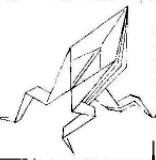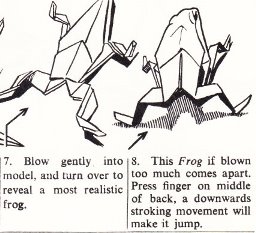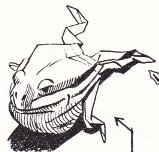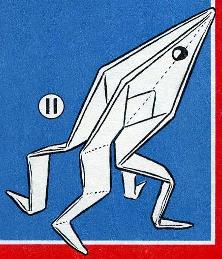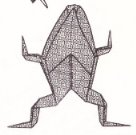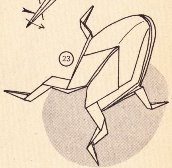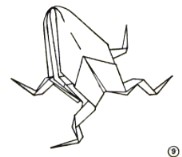| The Public Paperfolding History Project
Last updated 15/7/2024 x |
|||||||
| The Inflatable Frog / Japanese Jumping Frog | |||||||
| This
page is being used to collect information about the
history of the paperfolding design known as the
Inflatable Frog / Japanese Jumping Frog. Please contact
me if you know any of this information is incorrect or if
you have any other information that should be added.
Thank you. ********** Introduction In the book 'The Nightless City, or the History of the Yoshiwara Yukwaku by an English Student of Sociology' written by Joseph Ernest De Becker and published in Yokohama by Z.P. Maruya & Co. Ltd in 1899 there is a chapter on Magic Charms of the Yoshiwara which includes the following passage:
*** Gershon Legman included the following details in his Bibliography of Paper Folding, self-published in 1952:
I have not been able to locate the references Legman gives. *** In his book 'Folding the Universe', published by Vintage Books in 1989, Peter Engel wrote, 'it became customary for a geisha to pin a paper frog to a pillar after entertaining a favourite patron, in the hope that he would return.' No reference for this version of the charm is given. *** Another reference occurs in Robin D Gill's 'Octopussy: Dry Kidney and Blue Spots' published by Paraverse Press in 2007, which is a treatise on Senryu poetry. In explaining the meaning of a poem which he translates as 'by the whore fishing for a frog, a pot of herbal tea' the author states 'The frog is a charm made of folded paper ... with the name of a customer whom the courtesan wants to come back written on its back. 'Frog' in Japanese is a homophone of 'return' (kaeru) ... The frog was hidden in a drawer or somewhere where no one would notice it.' ********** In China (and in publications by Chinese authors) 1914 Diagrams for this design appear in 'Zhe zhi tu shuo' (Illustrated Paperfolding), compiled by Gui Shaolie, which was published by the Commercial Press in Shanghai in Ming guo 3 (1914).
********** In Japan (and in publications by Japanese authors) 1752 This print, which appears to be by the Japanese print designer Nishikawa Sukenobu (1671-1750), shows women folding paper. Among the designs they have folded is the Blow-up Frog. In Kunihiko Kasahara's book 'The Art and Wonder of Origami', Apple Press, 2004, he describes a print showing Komoso, the Frog and a cube which is said to come from the book 'Onna-you kyokun ehon hana-no-en', published in 1752. Kasahara does not name the author and I have not been able to verify that this is the print he is describing, although it seems likely that this is the case. If so it must have been published posthumously.
********** c1824 This print by Yashima Gakutei (1786-1868), which can be dated to around 1824, shows a courtesan holding a folded paper frog, probably intended to be the Inflatable Frog design.
********** 1845 Diagrams for the Inflatable Frog first appear on page 47 of the Kan No Mado, which is usually dated to 1845. It is one of only a handful of designs in this manuscript that is folded from an uncut square. 6a marks the instruction to inflate the body.
********** 1847-1852 This triptych by Yoshitsuya (1822-1866) shows the magician Jiraya creating paper frogs. It is said to date from between 1847 and 1852.
********** 1852 This strikingly similar dyptich by Kunisada Utigawa is said to date from 1852.
********** 1863 This somewhat similar print from 1863 is Jiraya, from the series Toyokuni kigo kijutsu kurabe (Comparison of witchcrafts). The leading frog has a knotted letter in its mouth.
********** 1869 The central lady in this triptych by Utagawa Kuniaki, which can be dated to 1869, is preparing to inflate a paper Crane, while a completed Sanbo, an Inflatable Frog and another design, which I cannot identify, lie on the floor in front of her. Source: 'Oru Kokoro', the catalogue of an exhibition on paperfolding history held in Tatsuno City History and Culture Museum in 1999.
********** 1877 This print by Toyohara Kunichika (1835-1900), titled Sheep, from the series Magic in the Twelve Signs of the Zodiac, can be dated to 1877. It is not clear why the picture features paper frogs rather than the sheep of the title.
********** 1878 A drawing of the Inflatable Frog appears in 'Yochien Ombutsu No Zu', a publication of kindergarten material issued by the Tokyo Women's Normal School in 1878.
********** 1893 Diagrams for the Inflatable Frog appear in volume 3 issue 5 of the Japanese children's magazine 'Yonen Zasshi' in 1893. There is no mention in these diagrams that the design can be inflated.
********** Diagrams also appear: 1905 In 'Shukouka Kyohon : Liron Jishuu Souga Setsumei' by Kikujiro Kiuchi, Rokushiro Uehara and Hideyoshi Okayama, which was published by Shigebei Takase in Chiba in 1905.
********** A drawing of the design also appears in 'Shukoka Kyoju Saian' by Gentaro Tanahashi and Hideyoshi Okayama, which was published by Hobunkan in Tokyo in 1905.
********** 1907 In 'Shukou Tebikigusa : Kokumin Kyoiku Origami Yuihimo' by Ishin Nishigaki, which was published by Meguro Shoten in Nagaoka in 1907.
********** 1908 In 'Origami zusetsu' (Illustrated Origami) by Sano Shozo, which was published in Tokyo in 1908.
********** 1912 A drawing of the Inflatable Frog appears in a monozukushi-e print, by an unknown artist, but said to be from the Meiji era. I have temporarily assigned it the date of 1912, the last year of that era, pending the discovery of more accurate information.
********** 1927 A drawing of the Inflatable Frog appears in an illustration by Takei Takeo in a 1927 issue of the children's magazine 'Kodomo No Kuni' (The Land of Children).
********** Diagrams also appear: 1931 In 'Origami (Part 1)' by Isao Honda, which was published in Japan in 1931.
********** 1935 In 'Origami Moyo, Book Two' by Kawarazaki Kodo, which was published in Japan in 1935, contains a print showing the Inflatable Frog.
********** 1944 In 'Origami Shuko' by Isao Honda, which was published in 1944.
********** 1959 In 'Pocket Guide to Origami: Bow-Wow Book', by Isao Honda, which was published by the Asahi Origami Club, Tokyo in 1959.
********** 1965 In 'The World of Origami' by Isao Honda, which was published in the USA by Japan Publications Trading Company in 1965.
********** In Europe and the Americas 1889 As far as I know the earliest publication of diagrams for the Inflatable Frog appeared in 'La Nature' of 28th September 1889 in an article headed 'Recreation Scientifiques' and subheaded 'La Grenouille Japonaise en Papier' (The Japanese Paper Frog). The article is attributed to Dr Z. I do not know who used this nom de plume. The article is interesting not only for the diagrams it contains but also for the incidental information it provides. In his introductory paragraphs Dr Z states, roughly, 'The Ministry of Public Education of Japan has sent to the Exhibition (ie presumably the Paris Exposition of 1889) an interesting series of industrial and artistic designs ... made by children of both sexes in the country's school rooms ... but one can notice others which are not less curious. These are the recreational works done by the small children of the Azabu private school in Tokyo. The series of displays showing cut out and coloured papers combined to make flowers, butterflies or marquetry designs are quite attractive and our children would probably be happy to know how to make such pretty things. In France, it is true, we also know the charming game of folding paper. The classic Cocotte, the box and the galiote etc., are popular here but we must agree that the Japanese have more ingenious models. The Frog that we put in front of our young readers is an example. It is thanks to MM, the commissioner of Japan, that we have been able to trace the figures necessary for its execution'. At the end Dr Z adds, again roughly, 'La Nature has previously given another example of the Japanese game of paperfolding, which was how to make the paper bird (ie the Flapping Bird). We also noticed in the exhibition other designs among which were the crab from red paper, the junk and the hat of Daimios (demon), the parrot etc., The way these designs are made has many points of resemblance to the Frog.' Dr Z does not appear to be aware that this frog can be inflated. A discussion of the implications of these statements for other designs etc can be found here.
********** 1890 There is reference to an inflatable frog in 'Soap Bubbles and the Forces which Mould Them' by C V Boys was published by The Society for the Promotion of Christian Knowledge in London and by E and J B Young and Co in New York in 1890.
********** 1891 Diagrams for a version of the Inflatable Frog, under the title of 'Le Grenouille japonais', and folded from an eight-pointed star, appeared in the supplement to 'Petit Francais Illustre' on 24th January 1891. Information from Juan Gimeno. Presumably this is to simplify the design for children.
********** There are several references to a grenouille japonaise, which I take to be the Inflatable Frog, in the 'Bulletin de la Societe de Protection des Apprentis', an official document issued by the Societe de Protection des Apprentis et des Enfants Employes par les Manufactures in Paris in 1891. ********** 1891 Diagrams for a version of the Inflatable Frog design appear in 'Pleasant Work for Busy Fingers' by Maggie Browne, which was published by Cassell and Company in London in 1891. The author does not appear to have known that the design could be inflated.
********** 1900 A version of the design appears as 'La Grenouille' in the French children's magazine 'Mon Journal', probably in 1900, although I have not been able to identify the exact date of the article. The author does not appear to have known that the design could be inflated.
********** 1901 The January 1901 issue of the American children's magazine 'St Nicholas' contained an article titled 'Polly's Rainy-Day Story' by Constance Mackenzie Durham, which explained how to make the Inflatable Frog, though without mentioning that it could be inflated.
********** 1903 The design also appears, though is not fully diagrammed, in 'La Ensenanza del Trabajo Manuel' by Pedro de Alcántara García and Teodosio Leal y Quiroga, which was published in Madrid in 1903, with the added twist that it is used to show the metamorphosis of a frog from a tadpole. Lack of full diagrams argues that the authors expected that the kindergarten teachers who the book was aimed at would already be familiar with how this design could be folded.
********** 1904 The design appears as 'Rana o Juguete Japonais' (Frog or Japanese Toy) in 'Guia Practica del Trabajo Manual Educativo' by Ezequiel Solana, which was published by Editorial Magisterio Español in Madrid in 1904. There is no mention of the frog being capable of being inflated or made to jump. The introduction reads 'Among the interesting hobby objects made by children in the schools in Japan that aroused the most interest at the last Paris Exposition is the frog we represent here.' Presumably this is a reference to the Exposition Universelle de Paris of 1900.
********** The Inflatable Frog also appears in 'The Book of Indoor Games' by J K Benson, which was published by C Arthur Pearson Limited in London in1904. There is no mention of the frog being capable of being inflated or made to jump.
********** 1905 Diagrams / folding instructions for the Inflatable Frog also appear, under the name of 'el sapo' (the toad) in the Buenos Aires edition of the magazine 'Caras y Caretas', Issue 238, of 25th March 1905.
********** 1907 Folding instructions also appear in an article titled 'El trabajo manual escolar' by Vicente Casto Legua in the January 1907 issue of the Spanish magazine 'La Escuela Moderna' which was published in Madrid by Los Sucesores de Hernando, under the title 'Rana'.
********** Diagrams also appear: 1908 As 'La grenouille qui saute' in 'Les Petits Secrets Amusants' by Alber-Graves, which was published by Librairie Hachette in Paris in 1908. The author does not appear to be aware that this frog can be inflated.
********** 1910 As the 'Japanese Frog' in 'Studies in Invalid Occupation' by Susan E Tracy, which was published by Whitcomb and Barrows in Boston in 1910.
********** 1911 In Häusliche Kleinkunst und Bastelarbeit in Wort und Bild' by Hermann Pfeiffer, which was published by Verlag von Hermann Zieger in Leipzig in 1911. The author is aware that this frog will jump but seems to be unaware that it can be inflated.
********** 1914 As 'La Rana' in 'El Trabajo Manual en la Escuela' by Félix Martí Alpera, which was published by Libreria de los Sucesores de Hernando in Madrid in 1914.
The text reads, roughly, 'The child who wants to learn how to make the frog should take a square of paper, go to another child who knows how this work is done and beg him to teach him how to make it. With written explanations i would never learn, and that's why I don't give them here. The drawings show the three transformations of this construction, which correspond to the main metamorphoses of the animal being imitated.' The author does not appear to know that the design can be inflated. ********** 1918 As 'Rana' in 'Ciencia Recreativa' by Jose Estralella, which was published by Gustavo Gili in Barcelona in 1918, although there is no mention that this frog can either be inflated or will jump.
********** 1922 In 'Houdini's Paper Magic', published by E P Dutton and Company of New York in 1922, where it is called the 'Bullfrog'. Houdini states that he learned this design from an 'Americanised Japanese' (from whom he also learned the Flapping Bird).
********** 1923 As 'Jumping Frog' in 'More Paper Magic' by Will Blyth, which was first published by C Arthur Pearson in London in 1923.
********** 1923 As 'La Rana' in 'Trabajos Manuales y Juegos Infantiles' by Francisco Blanch, which was published by I. G. Seix y Barral Hermanos S.A.- Editores in Barcelona in 1923. There is no indocationthat the author knew the frog could be inflated.
********** 1928 As just the 'Frog', in Fun with Paper Folding, by Murray and Rigney, which was published by the Fleming H Revell Company, New York in 1928.
********** c1929 As 'El Sapo' in Booklet 5 of 'Trabajos Manuales Salvatella - Plegado de figuras de papel', which was published by Editorial Miguel A Salvatera in Barcelona in or around 1929.
********** 1931 In 'La Nature' during the 2nd Half of 1931(I do not know the date or issue no) in an article by Alber headed 'Pliage de Papiers' and subheaded 'La Grenouille Sauteuse' (The Jumping Frog). The author does not appear to know the design can be inflated.
********** 1932 As 'La Grenouille' in Booklet 4 of 'Images a Plier', a series of 6 booklets published by Librairie Larousse in Paris in 1932.
********** 1936 'Paper Toy Making' by Margaret Campbell, which was first published by Sir Isaac Pitman and Sons Ltd in London, probably in 1937, although both the Foreword and Preface are dated 1936, which argues that the book was complete at that date, contains four sets of diagrams for frogs, all of which are variants of the Inflatable Frog design. Long-toed Frog
Inflated Frog
Bull Frog (The Unflatable Frog)
Hooded Frog
********** 1939 A version of the Inflatable Frog, under the name 'La rana del Japon', appears in 'El Mundo de Papel' by Dr Nemesio Montero, which was published by G Miranda in Edicions Infancia in Valladolid in 1939. The symmetry of the front and back legs is curious, and no mention that the design can be inflated is made.
********** As 'The Frog' in 'Fun with Paper' by Joseph Leeming, which was published by Spencer Press Inc in Chicago in 1939.
********** 1946 The April 1946 issue of Popular Mechanics magazine contained an article, entitled 'Folding Paper is Fun for Everyone', which contained diagrams for the Inflatable Frog. I learned about this article from Oschene. The article does not mention that the design can be inflated but instead presents it as a 'hopping frog'.
********** 1952 As 'Rana' in 'Una Hoja de Papel' by Lorenzo Herrero, which was published by Miguel A Salvatella in Barcelona in 1952. The diagrams show that the author knew this design could be inflated.
********** 1956 Two versions appear in 'Paper Magic' by Robert Harbin, which was published by Oldbourne in London in 1956 as 'Jumpimg Frog' and 'Blow-up Frog'. Jumping Frog
*** Blow-up Frog This second version seems to be a new variation designed to make the frog hold together better when inflated to the fullest possible extent.
********** 1958 The 1958 Rupert Annual contained instructions for making 'Rupert's Paper Frog'. There are no instructions for inflating it.
********** The design also appears: 1961 As the 'Jumping Frog', in The Art of Origami' by Samuel Randlett, which was published by E P Dutton in New York in 1961.
********** 1963 As 'Frog' in the second edition of 'Het Grote Vouwboek' by Aart van Breda, which was published by Uitgeverij van Breda in 1963. There is no mention that this design can be inflated. Rather the head / body is shaped by pulling the layers apart.
********** 1964 As the 'Jumping Frog' in 'Secrets of Origami', by Robert Harbin, which was published by Oldbourne Book Company in London in 1964. The diagrams do not mention that the design can be inflated.
********** 1968 As just 'Frog' in 'Teach Yourself Origami: The Art of Paperfolding' by Robert Harbin, which was published by The English Universities Press in 1968.
********** In 'Your Book of Paperfolding' by Vanessa and Eric de Maré, which was published by Faber and Faber in London in 1968, where it was is to be a traditional Japanese design.
********** |
|||||||
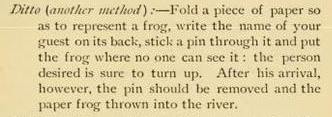
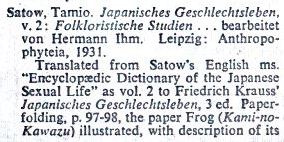

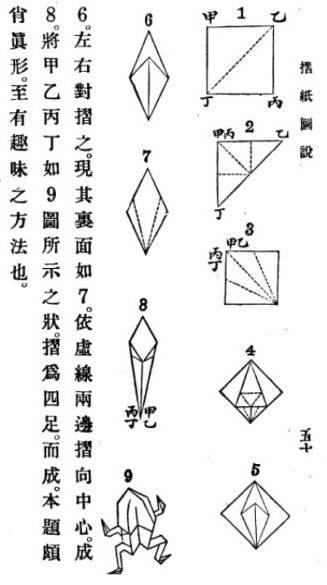
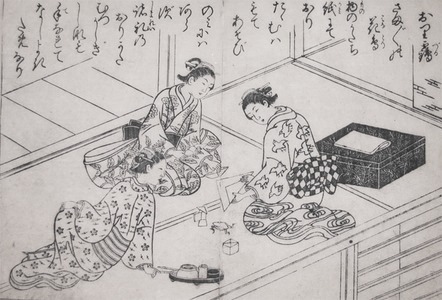
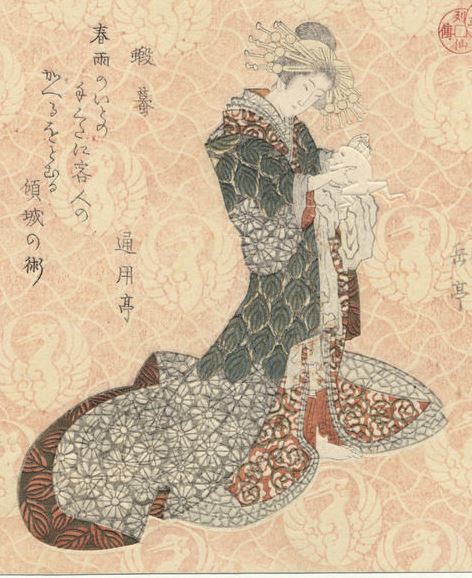

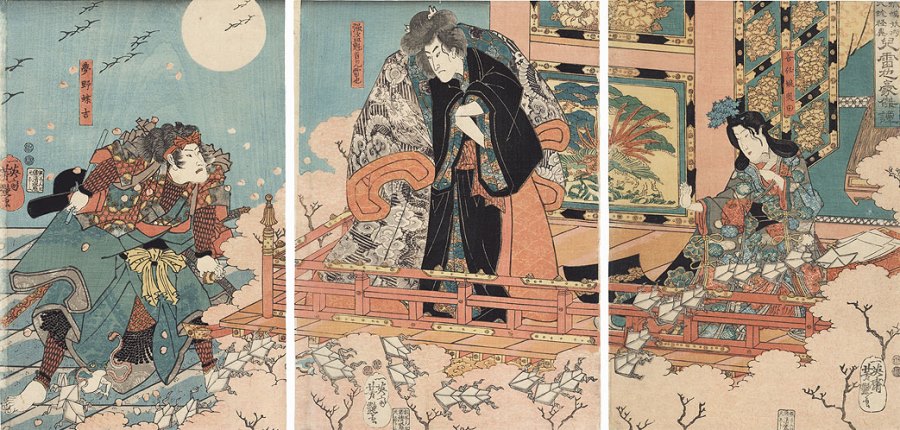
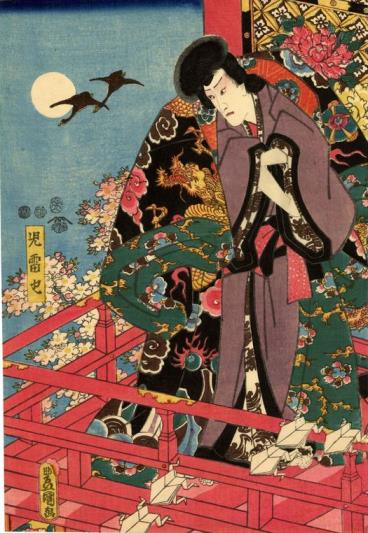

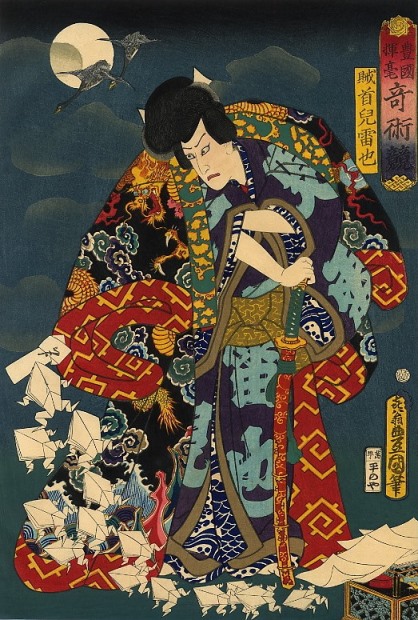
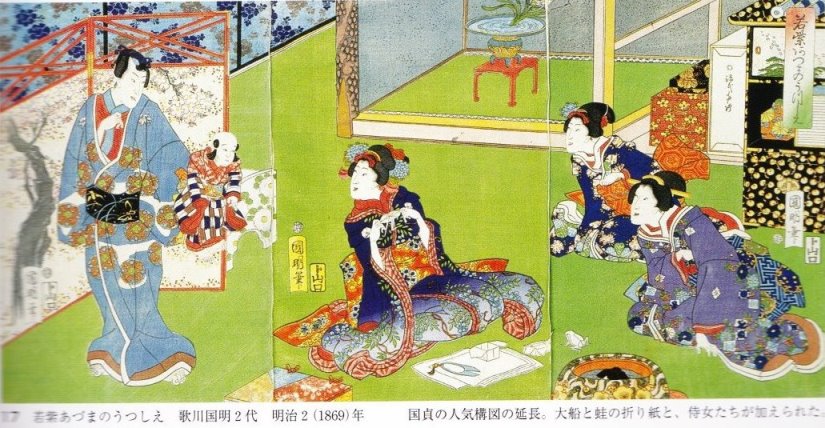
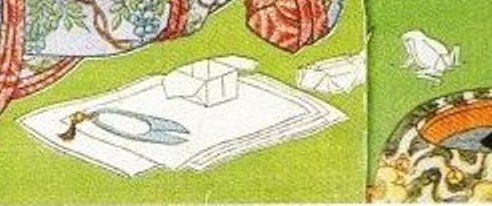
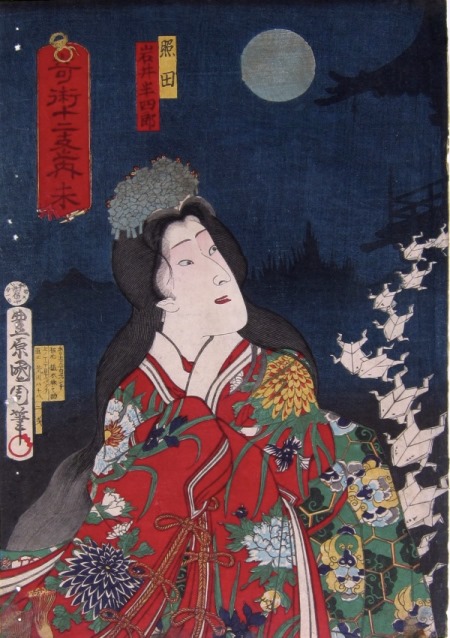

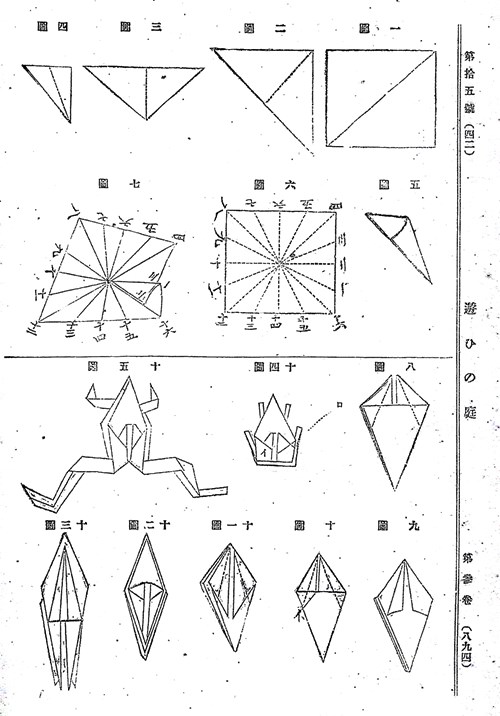
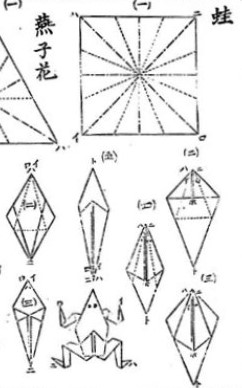

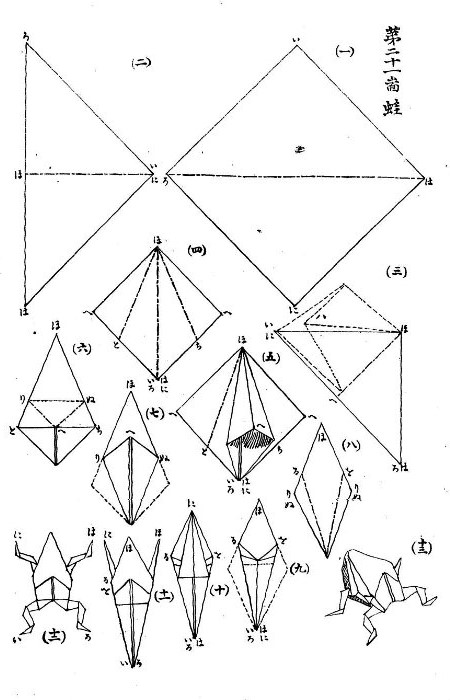
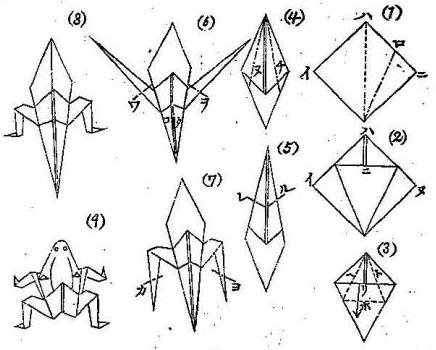
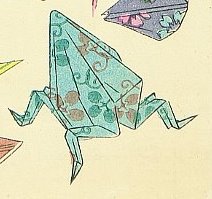
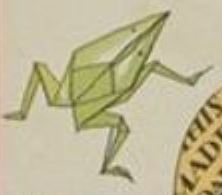
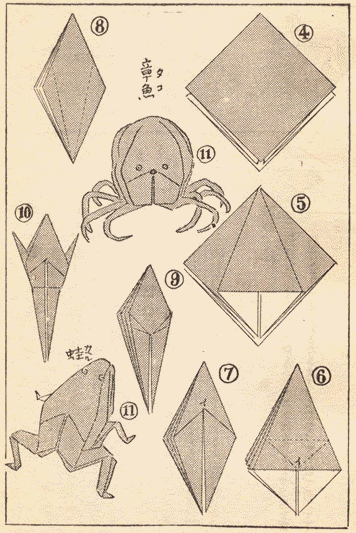
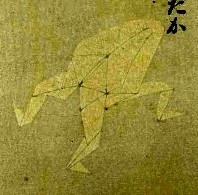
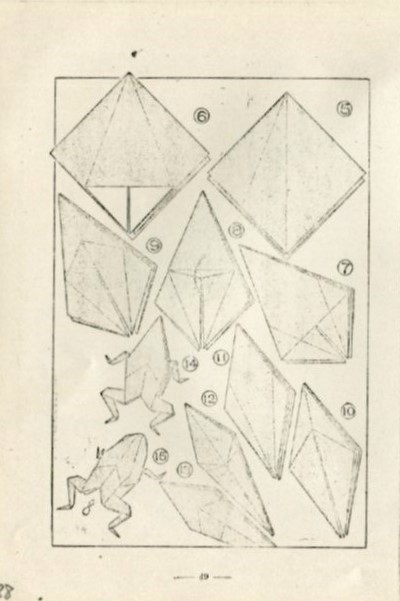

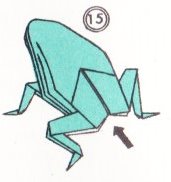
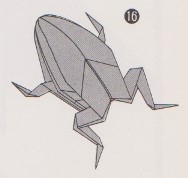
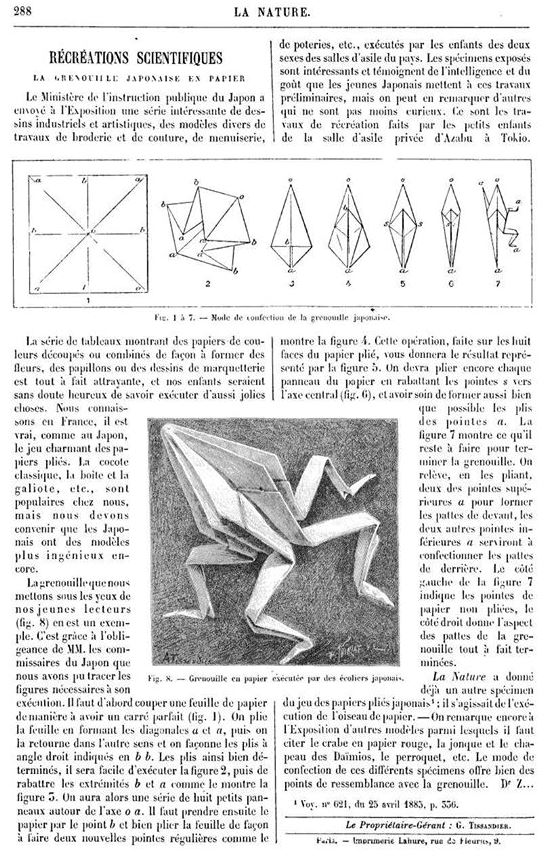
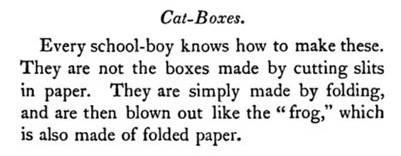
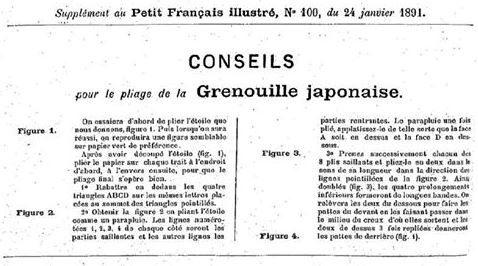
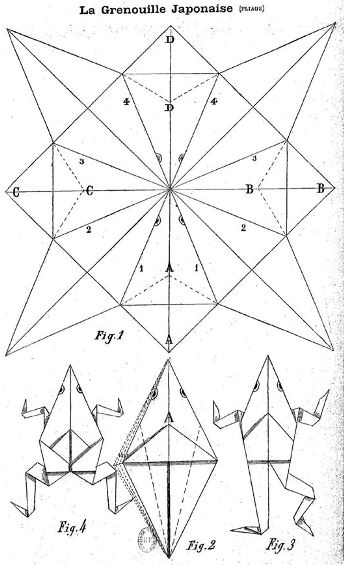
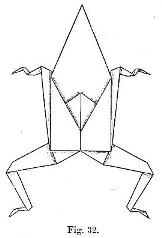
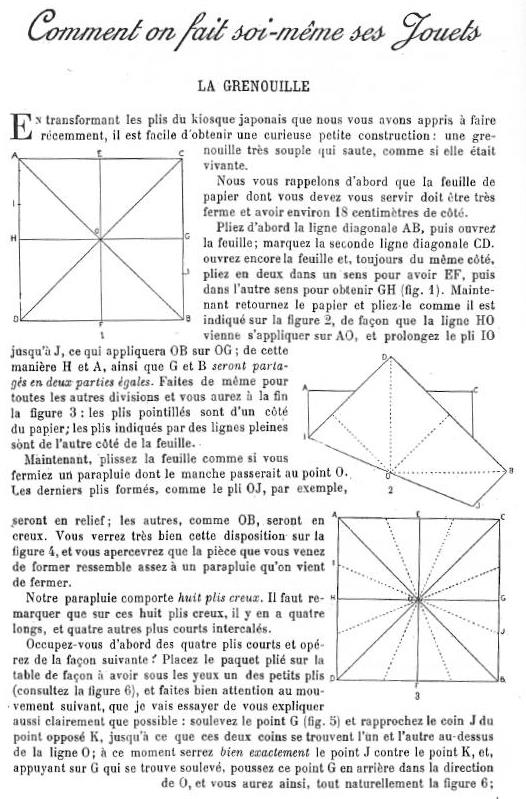
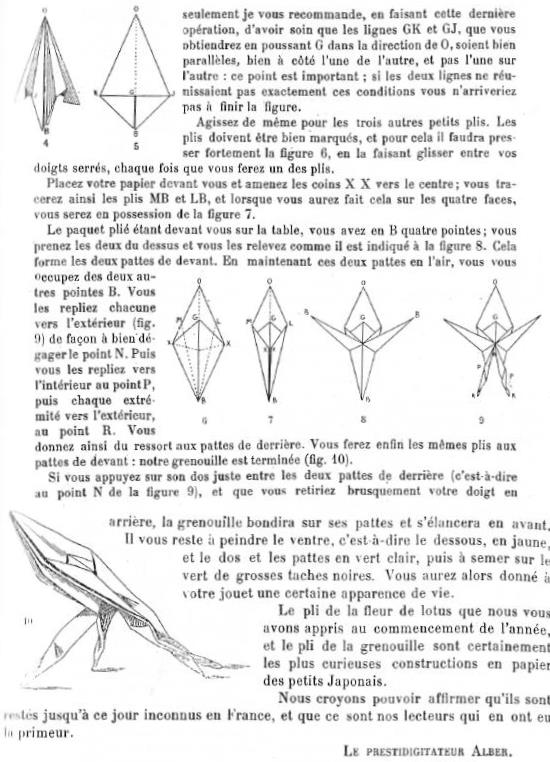
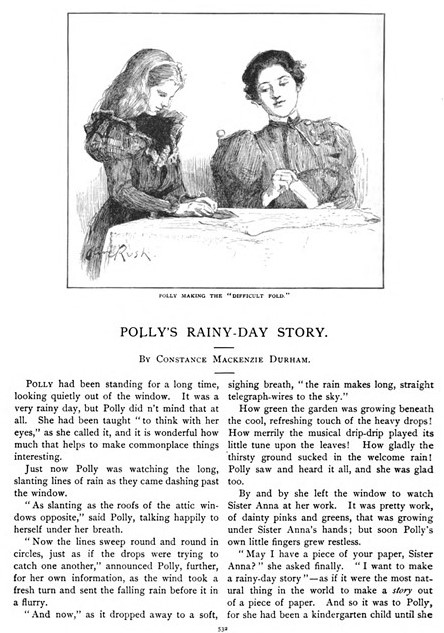
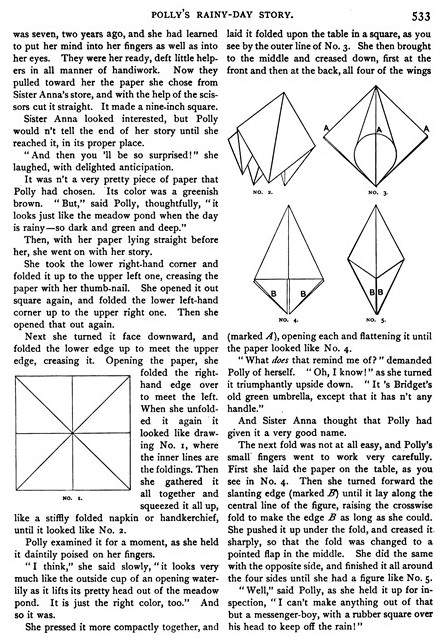
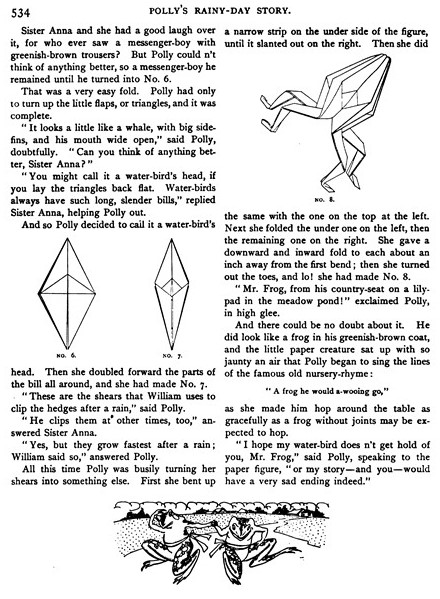
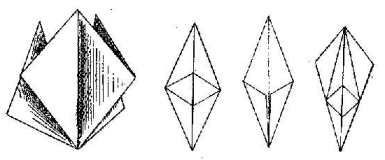
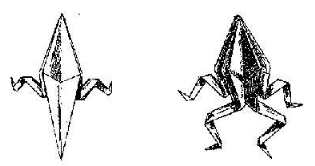
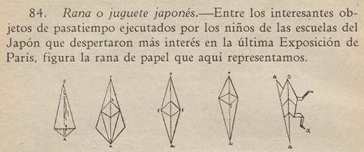
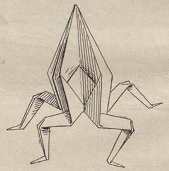
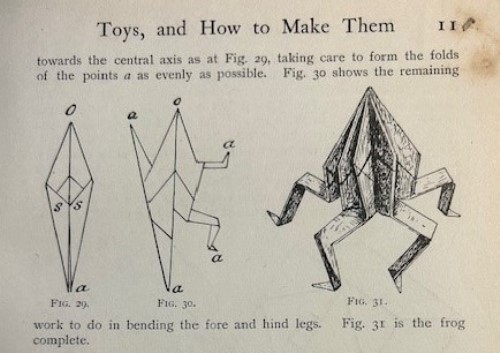
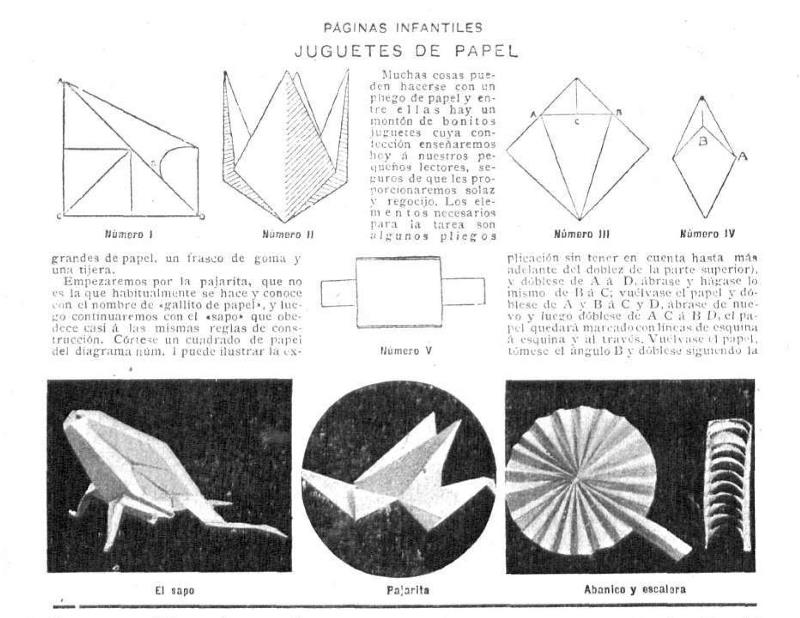
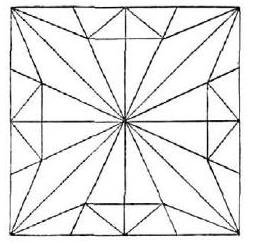
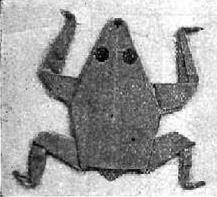
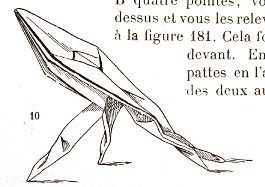

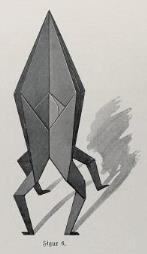
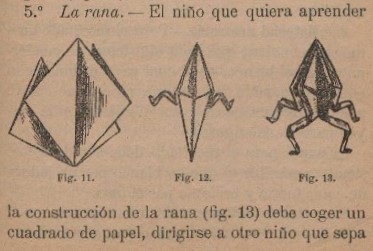
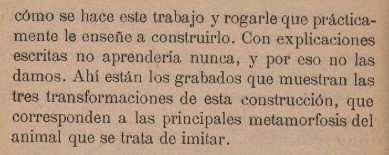
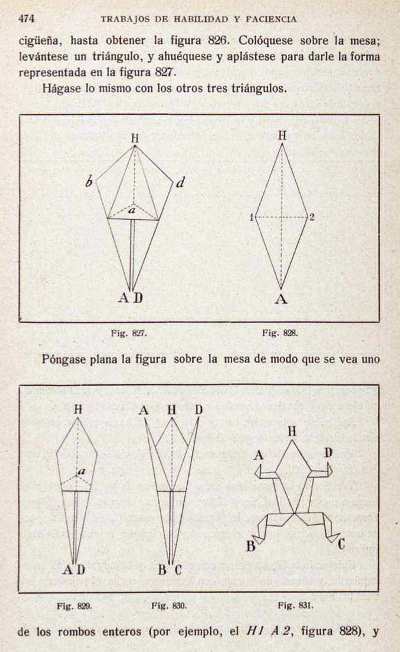


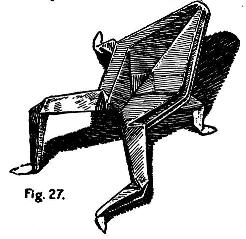
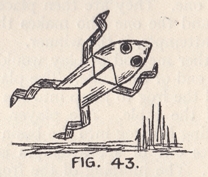
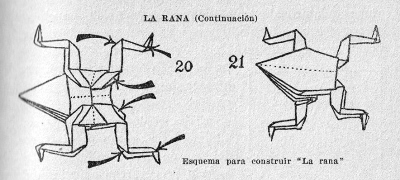
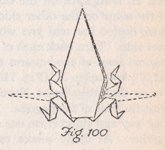
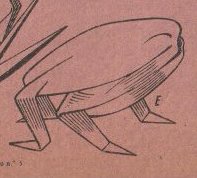
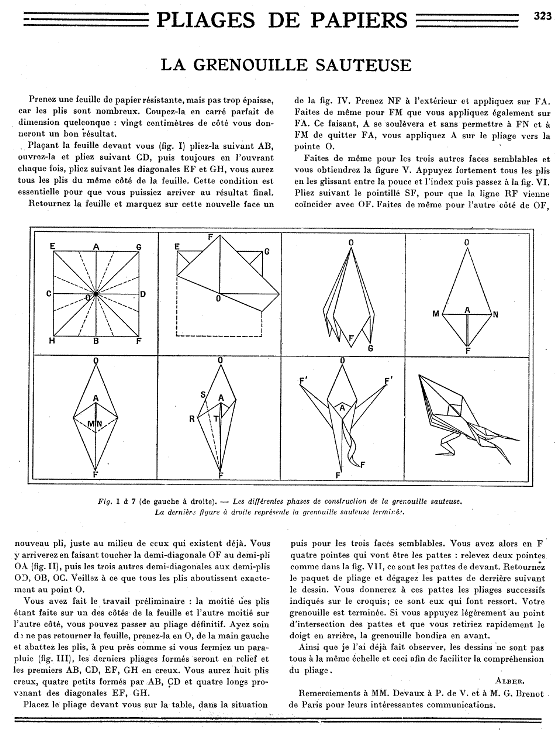
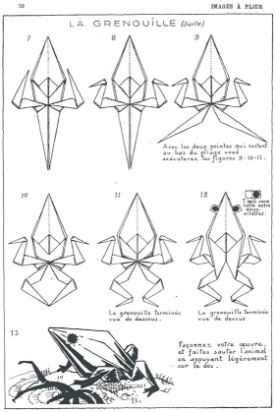
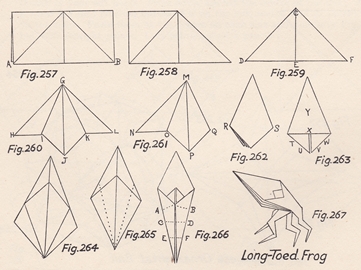

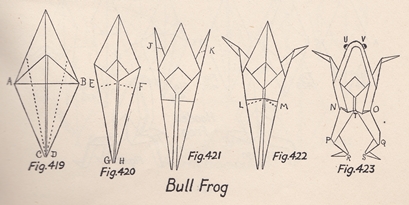
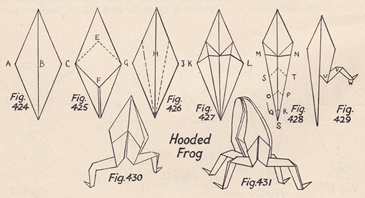
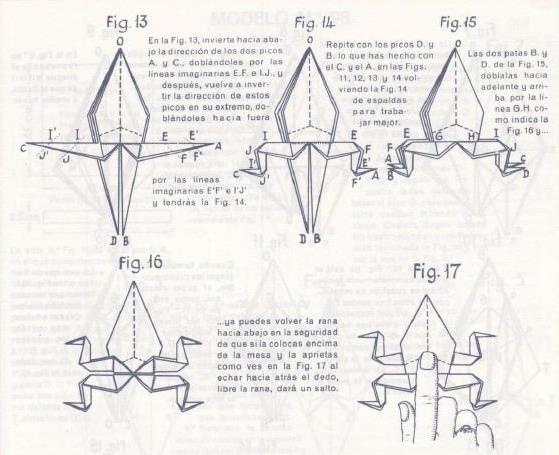
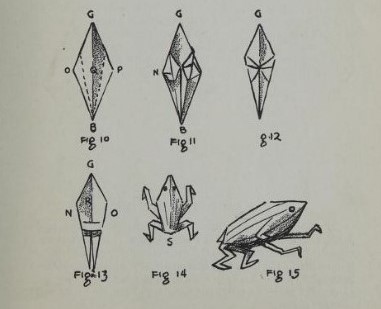
.jpg)
